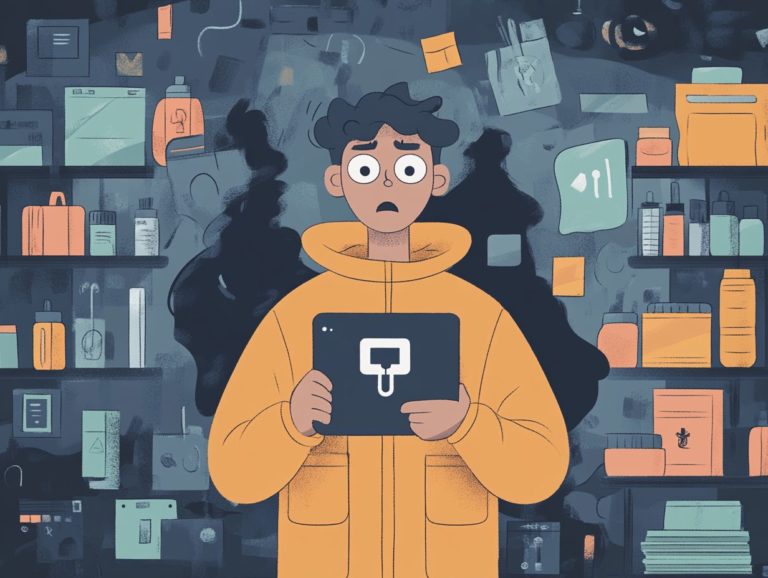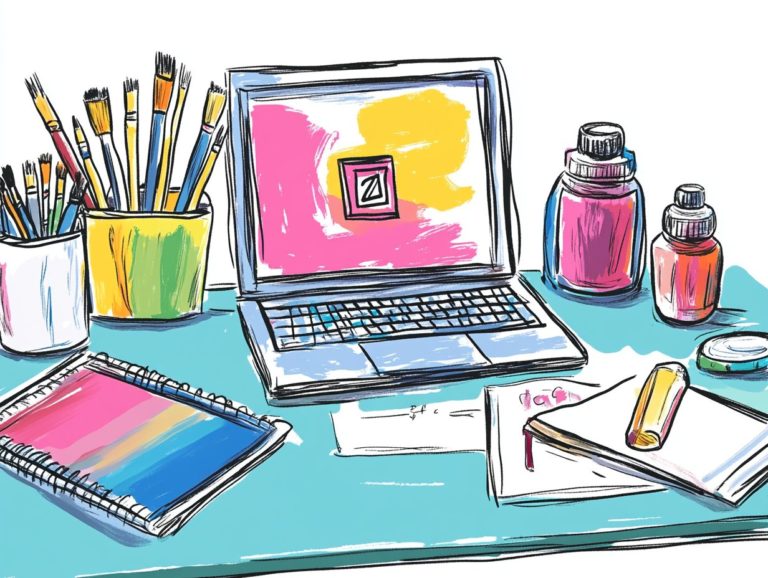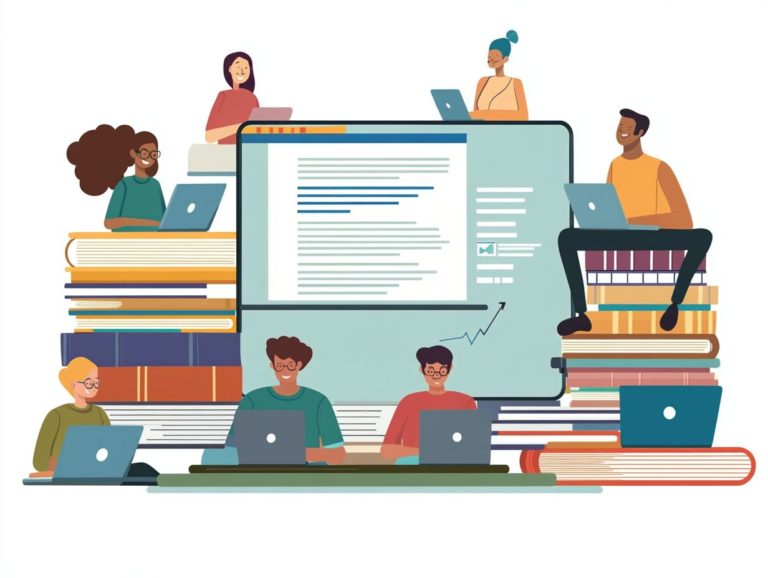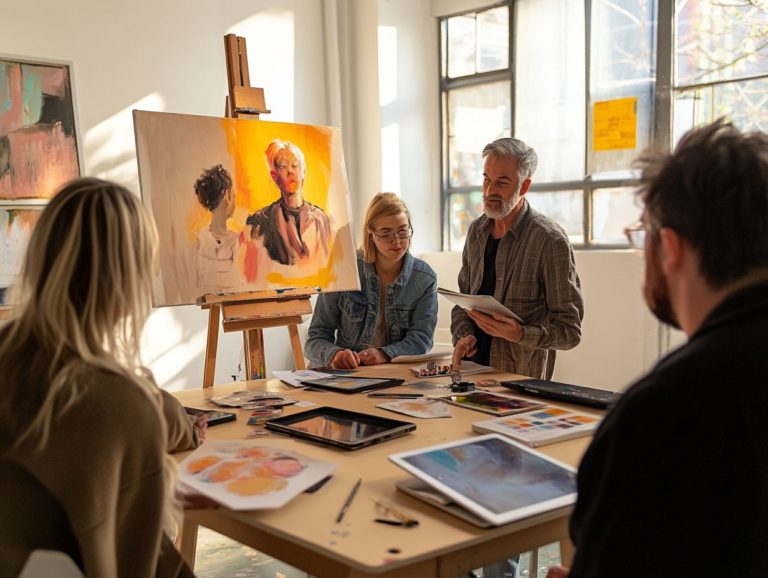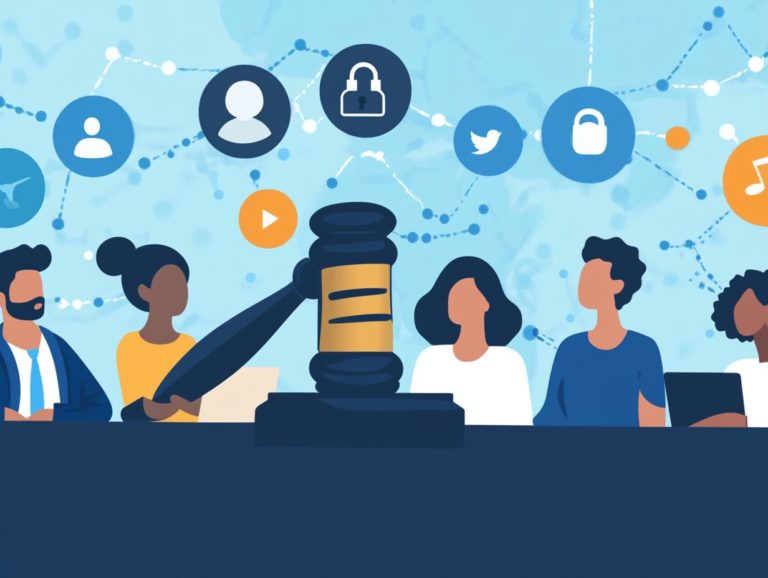Exploring Copyright Exceptions: What You Should Know
Copyright laws safeguard creators. They also provide exceptions that foster creativity and enhance access to information.
This article explores different types of copyright exceptions. You will learn about fair use, public domain, and Creative Commons, including clear definitions and their purposes.
Discover the advantages these exceptions offer, along with the limitations and challenges that creators might face.
By the end of your reading, you’ll gain a nuanced understanding of copyright rules, allowing you to navigate them with confidence and clarity.
Contents
Key Takeaways:

Copyright exceptions allow innovative uses of material and promote access to information!
Understanding fair use, public domain, and Creative Commons helps you navigate the complexities of copyright.
Careful consideration and proper implementation of copyright exceptions balance the needs of creators and users.
Understanding Copyright Exceptions
Copyright exceptions are essential in copyright law. They define situations where you can use copyrighted works without needing explicit permission from the copyright owner.
These exceptions balance the interests of creators and consumers. They promote artistic expression and educational endeavors while maintaining copyright protection.
Understanding these exceptions is crucial. They enable you to engage with creative works in significant ways, fostering innovation and enriching public discourse.
As you explore the intricacies of these exceptions, you will uncover how they interact with the broader landscape of copyright rules and policies.
Definition and Purpose
Copyright exceptions refer to specific scenarios in copyright law. In these situations, you can use copyrighted works without needing prior permission from the copyright owner.
These exceptions serve a dual purpose. They protect creators’ rights while ensuring reasonable access to cultural and educational materials.
For example, fair use allows you to reproduce limited portions of copyrighted content for criticism, commentary, news reporting, teaching, and research.
Exceptions for educational purposes allow educators and students to use certain materials without worrying about copyright infringement. This fosters a more informed society.
By balancing the interests of creators and the community, these exceptions encourage innovation and creativity while respecting intellectual property frameworks.
Types of Copyright Exceptions
Copyright law includes several distinct exceptions, each fulfilling specific purposes. Concepts like fair use, public domain, and Creative Commons licenses cater to varying needs in copyright protection and promote knowledge dissemination.
Understanding these nuances allows you to approach copyright with confidence and clarity.
Fair Use
Fair use is a crucial exception in copyright law. It enables you to utilize copyrighted material without seeking permission from the owner, especially when your use serves a transformative purpose or has minimal market impact.
This legal doctrine is vital in areas like political commentary and criticism. Repurposing copyrighted content can enrich discussions on societal issues.
In educational environments, teachers and students often engage with copyrighted works to deepen their learning. They draw upon excerpts or clips that align with fair use guidelines.
Transformative use plays a pivotal role here. You must show how your work transforms the original material to provide new insights or perspectives.
A pertinent example is Campbell v. Acuff-Rose Music, Inc., where a parody song was ruled as fair use. This highlights the need to evaluate the market effect on the original work and the intent behind the reuse.
The balance between safeguarding creators’ rights and fostering creative freedom remains at the heart of the fair use doctrine.
Public Domain
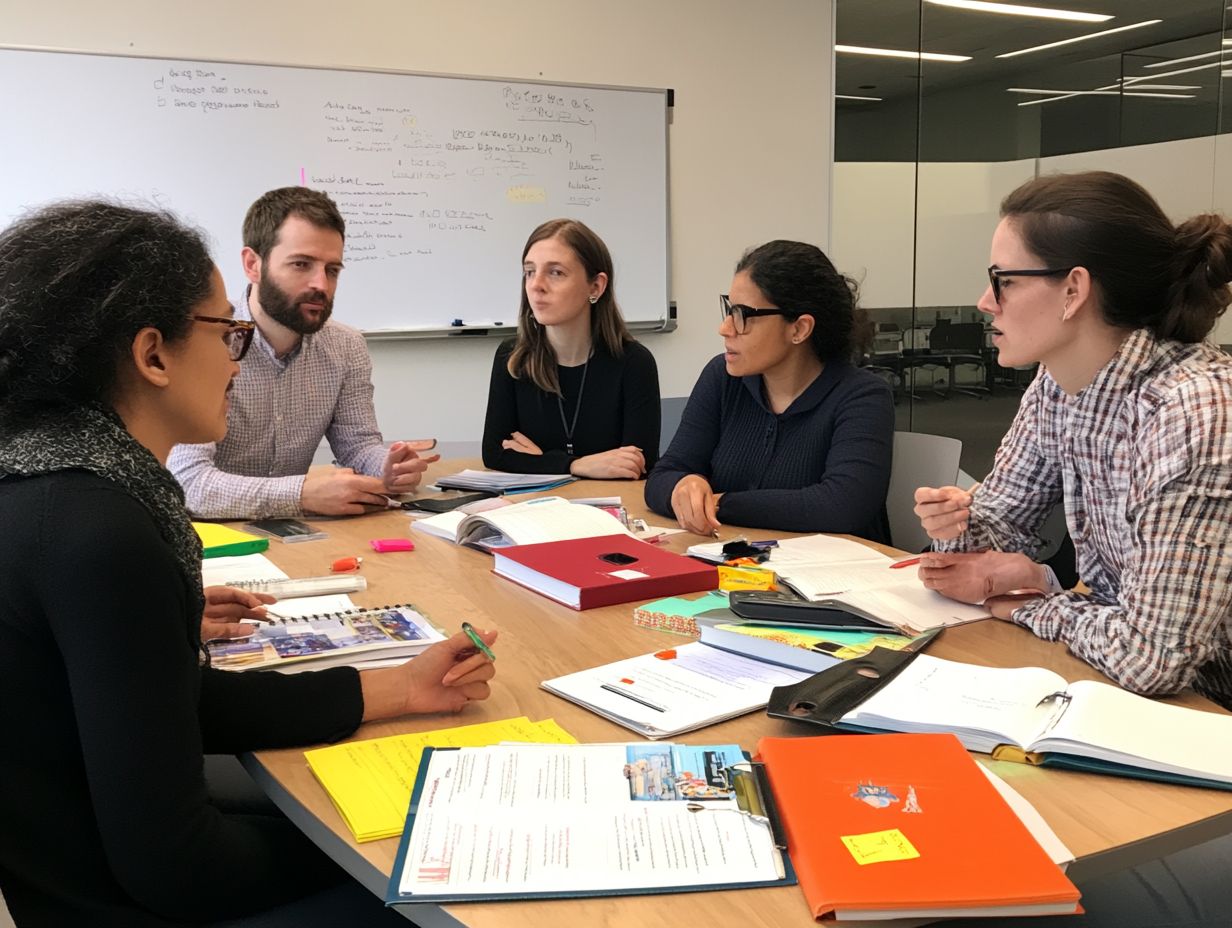
Works that reside in the public domain are no longer bound by copyright. This means you can freely use, copy, and modify them without seeking permission from any copyright owner.
This status often applies to creative materials whose copyrights have expired, allowing them to enter the public realm. The duration of copyright is typically dictated by the laws in effect at the time of a work’s creation, and it can vary dramatically depending on the jurisdiction.
For instance, literary classics like Shakespeare’s plays or Beethoven’s compositions are now public domain treasures that you can explore and reinterpret at will.
The transition of works into the public domain significantly shapes the landscape of intellectual property. This enables artists, educators, and researchers to build upon existing creativity without the constraints imposed by copyright law. It sparks innovation and cultural growth that benefit everyone!
Creative Commons
Creative Commons is a flexible licensing system that lets you control how your works are used while retaining certain rights. This approach fosters a vibrant culture of sharing and collaboration.
By choosing from various types of Creative Commons licenses, you can specify your desired level of restriction. Whether you opt for the most permissive options that allow adaptations and commercial use or select more restrictive licenses that prohibit modifications or require attribution, the choice is yours.
This versatility enables you to protect your original content while encouraging public access. It plays a significant role in contemporary copyright policy discussions. As digital distribution pushes against traditional boundaries, the relevance of these licenses becomes increasingly clear.
They illustrate a shift towards more open frameworks that prioritize creativity and community while navigating the complex dynamics of copyright ownership.
Benefits of Copyright Exceptions
Copyright exceptions present a wealth of advantages. They nurture innovation and creativity by allowing you to engage with copyrighted works for educational purposes, commentary, and transformative projects all without the limitations of traditional copyright constraints.
Promoting Innovation and Creativity
Copyright exceptions are essential in nurturing innovation and creativity. They allow you to engage with existing works in transformative ways that enhance new artistic expression.
Consider fair use. Fair use lets you use parts of copyrighted works without permission under certain conditions. It enables artists, educators, and scholars like you to weave elements of established works into your own creations, consequently enriching the cultural tapestry.
Take filmmakers, for example. They often draw inspiration from classic literature, transforming narratives into visually striking documentaries that reinterpret beloved stories from fresh perspectives.
Musicians similarly sample sounds from earlier records, crafting unique mashups that pay homage to their predecessors while delivering entirely new auditory experiences to their audiences.
These practices not only highlight the dynamic nature of creativity but also emphasize how a community can build upon shared knowledge. This cultivates an environment where innovation flourishes and collaboration thrives.
Ensuring Access to Information
One of the key advantages of copyright exceptions is that they ensure you have access to information, particularly for educational purposes. This allows scholars, students, and the broader public to engage with knowledge without facing overwhelming restrictions.
These exceptions are crucial for enhancing public interest and supporting scholarship. They provide educators with the freedom to utilize a diverse array of resources without the constant worry of infringement.
For example, in a university classroom, you can seamlessly incorporate excerpts from different texts, film clips, or scientific studies, enriching the overall learning experience.
Likewise, libraries depend on these provisions to offer free access to materials that would otherwise be hidden behind paywalls, effectively democratizing information access.
By allowing you to reuse content creatively, we open the door to endless possibilities! These exceptions promote innovation across various sectors, enabling research collaborations that could lead to breakthroughs in multiple fields.
Limitations of Copyright Exceptions
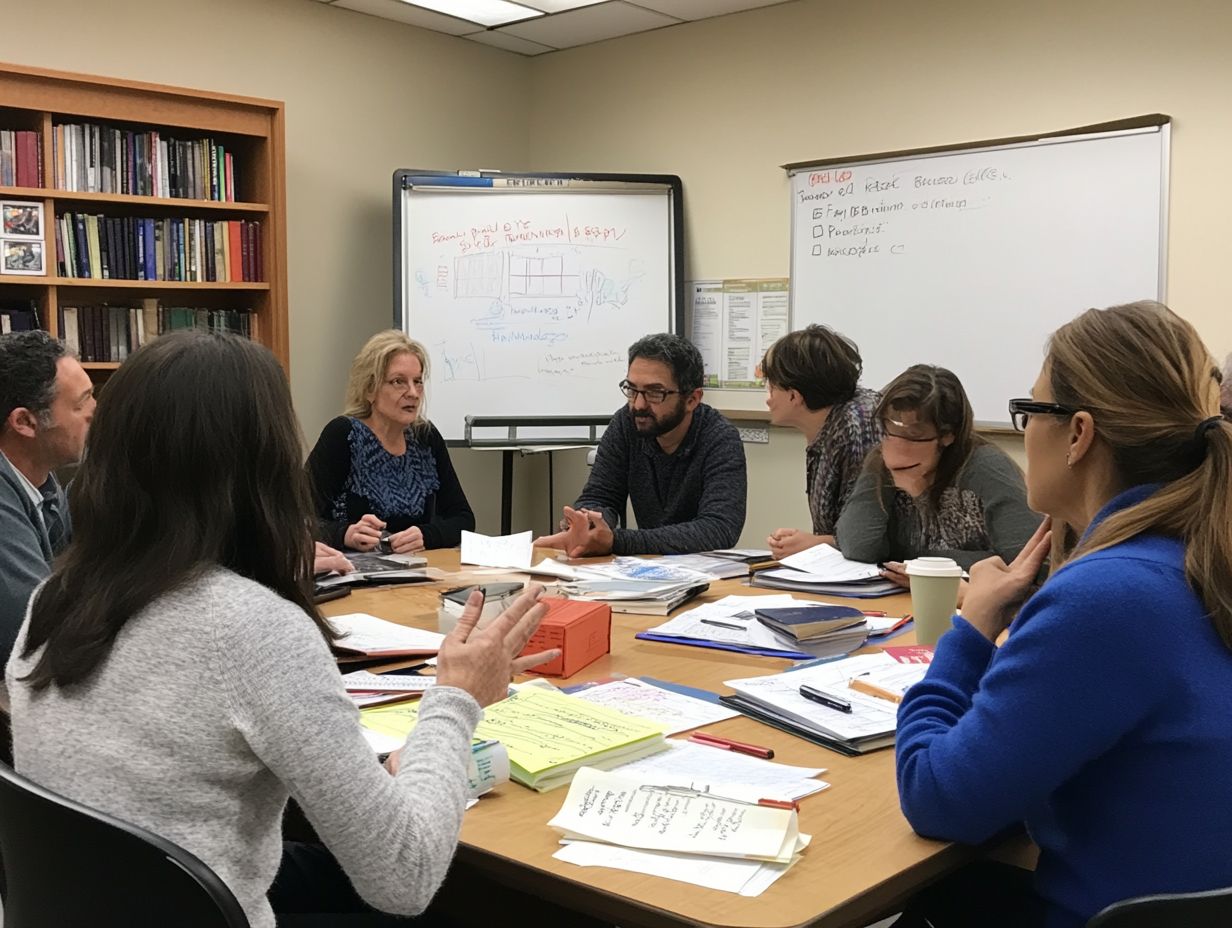
While copyright exceptions offer significant benefits, they also come with limitations that can affect both creators and consumers.
This often results in complexities in understanding the scope of permitted use and the potential for copyright infringement.
Potential Impact on Creators
Copyright exceptions can profoundly affect your rights as a creator. They may undermine your ownership and artistic expression if the boundaries of fair use and other exceptions aren t clearly defined.
When those boundaries become fuzzy, it opens the door to misuse. Others might leverage your work without appropriate compensation or attribution. Imagine a filmmaker discovering that their original content has been used in a documentary under the fair use exception, leaving them with limited options for recourse.
You might also find that your melodies are sampled without your permission, raising serious questions about the integrity of artistic rights.
These situations highlight the pressing need for clearer guidelines surrounding copyright exceptions. They can significantly alter how you protect your intellectual property while still nurturing innovation and inspiration in the arts.
Challenges in Implementation
Implementing copyright exceptions can be quite challenging. You may face a maze of legal ambiguities and the pressing need for a clear copyright policy that effectively balances the rights of creators with the public s access to creative works.
These challenges often leave you uncertain about how copyright laws apply, making it difficult to fully grasp your rights and responsibilities.
You might find yourself navigating a convoluted legal landscape where exceptions appear simple but can swiftly morph into complex issues without the right guidance.
This is where legal advice becomes essential. Misunderstanding these exceptions can expose you to significant copyright risks, including potential infringement claims or financial repercussions.
Recognizing the importance of knowledge-based decision-making is crucial for anyone like you who aims to utilize these exceptions effectively while respecting both the rights of creators and the interests of the public.
Navigating copyright exceptions demands a deep understanding of copyright law. You need to know precisely when to seek permission, how to craft an effective permission request, and why obtaining copyright clearance is crucial to sidestep any potential infringement.
How to Determine if an Exception Applies
To determine if a copyright exception applies, you need to evaluate the nature of your intended use and whether it aligns with established guidelines for educational purposes or other recognized exceptions.
This assessment typically requires examining several key factors, including:
- the purpose of your use,
- the nature of the copyrighted work,
- the amount of material you plan to utilize,
- the potential impact on the market value of the original work.
For example, using short clips from documentaries to foster classroom discussion may qualify as fair use. Likewise, crafting academic parodies or critiques can often be justified as long as they offer transformative value.
When in doubt, it’s wise to seek permission. Establishing clarity upfront can save you from potential copyright disputes down the line.
Frequently Asked Questions
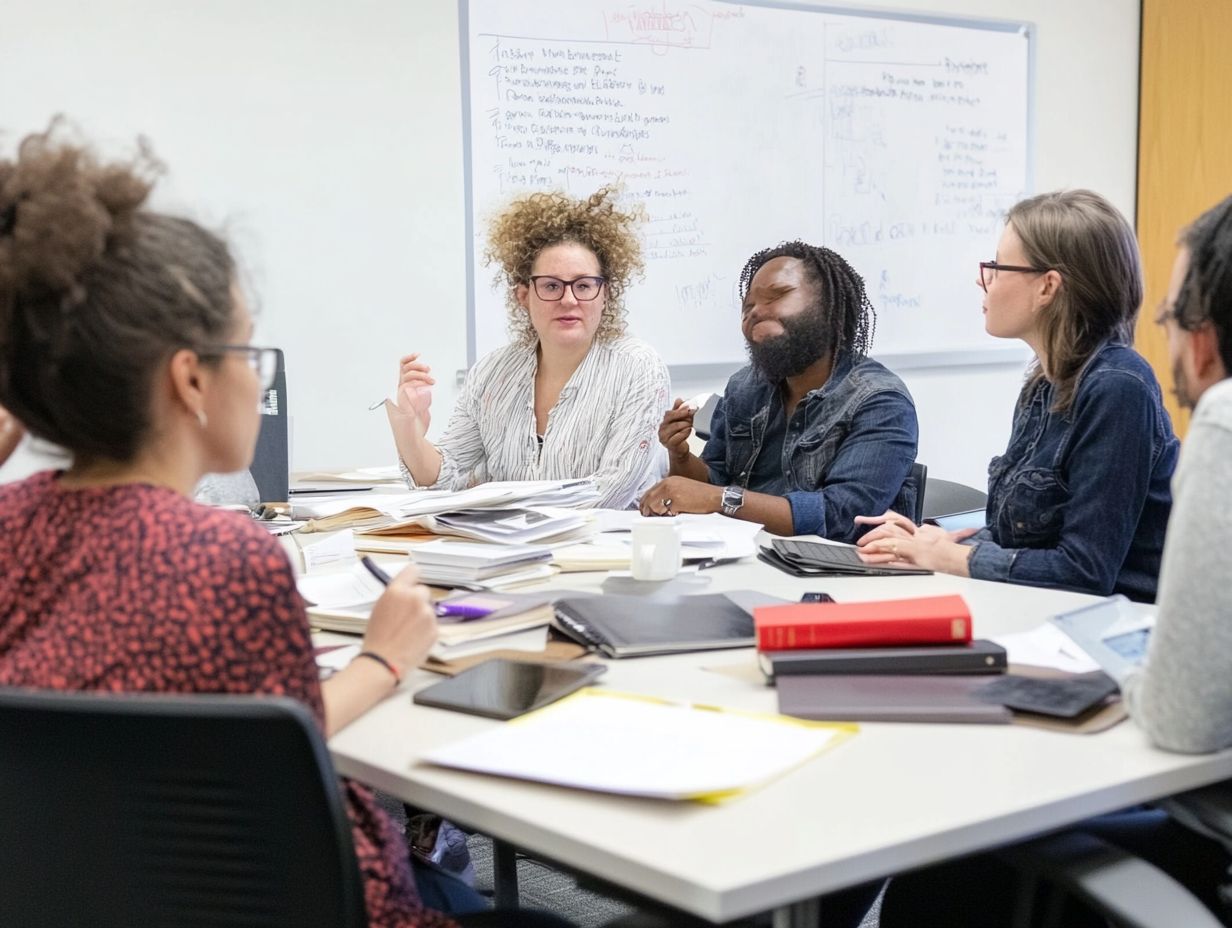
What are copyright exceptions?
Copyright exceptions are specific circumstances in which the use of copyrighted material is allowed without obtaining permission from the copyright holder. These exceptions vary by country and aim to balance the rights of the copyright owner with the needs of society, such as for education, research, or criticism.
Why is it important to understand copyright exceptions?
It is important to understand copyright exceptions to know your rights as a creator or user of copyrighted material. These exceptions can allow for the legal use of copyrighted material in certain situations, preventing potential copyright infringement.
Don t let copyright confusion hold you back! Consult with a legal expert today!
What Types of Uses Are Covered by Copyright Exceptions?
Copyright exceptions allow for various uses. These include reproducing material for personal or educational purposes, parody, news reporting, and public interest.
Are There Limitations to Copyright Exceptions?
Yes, copyright exceptions come with limitations. They have specific conditions, like how much material you can use and the purpose of the use.
Do Copyright Exceptions Apply to All Types of Copyrighted Material?
No, not all copyrighted material is covered. Some exceptions apply only to specific works, like literature or art, while others don t cover commercial uses.
How Can I Use Copyrighted Material Legally?
To stay within copyright boundaries, research the specific exceptions for your country. Always give proper credit and only use what you need.

